Managing for Results: Unfunded Request for Fiscal Year 2004
Conservation of the Peabody Complex Collection of Fine Art
Prepared by the Maryland State Archives, July 2002
Introduction
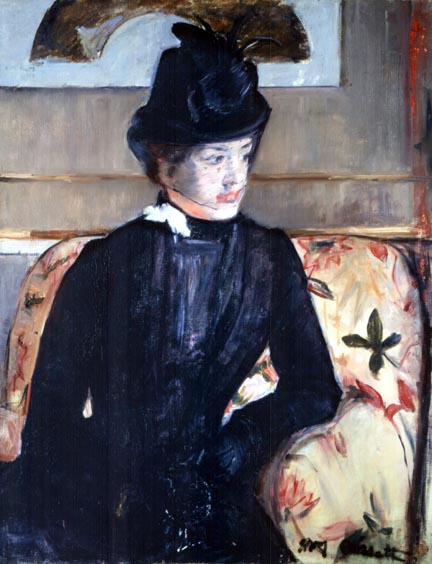 In 1996, the State of Maryland acquired the Peabody Art Collection when
the Board of Public Works and the General Assembly of Maryland, under the
leadership of Senate President Thomas V. Mike Miller and Speaker of the
House of Delegates, Casper R. Taylor, Jr., approved the final payment of
$15 million to the Peabody Institute, one of the state's premier cultural
institutions. The collection is now managed by the Maryland Commission on
Artistic Property (MdCAP) of the Maryland State Archives.
In 1996, the State of Maryland acquired the Peabody Art Collection when
the Board of Public Works and the General Assembly of Maryland, under the
leadership of Senate President Thomas V. Mike Miller and Speaker of the
House of Delegates, Casper R. Taylor, Jr., approved the final payment of
$15 million to the Peabody Institute, one of the state's premier cultural
institutions. The collection is now managed by the Maryland Commission on
Artistic Property (MdCAP) of the Maryland State Archives.
In the April 2001 Joint Chairmen's Report, the General Assembly requested
that the MdCAP prepare a condition assessment of the Peabody Art Collection
to be submitted by December 31, 2001. $30,000 was appropriated for this
purpose, and the assessment was completed and submitted to the Legislature
in December 2001.
This diverse collection of painting, sculpture, drawings, and decorative
arts, currently valued at over $19 million, is one of the finest in the
country and includes stunning works by American and European masters. Many
of these objects are requested for loan and reproduction in the United States
and abroad; some are on semi-permanent exhibition in the Miller Senate Building,
Government House, and institutions such as the Baltimore Museum of Art and
the Maryland Historical Society. This is a collection of which the state
can be exceptionally proud. However, a commitment must be made to its long-term
conservation and care.
The collection includes a total of 1,468 objects. Between July-December
2001, four conservators examined 101 paintings, 92 frames, 114 sculptures,
27 decorative art objects or sets of objects, 31 medals and painted miniatures,
and 1,100 works on paper. The conservators were: Sian Jones, paintings;
William Lewin, frames; Nancy Jean Davis, sculpture and decorative arts;
and Hanna Szczepanowska, paper. The survey included objects on display and
in storage.
Conservators ranked each object using the following criteria:
5 Extremely
poor condition, in danger of deterioration without conservation
4 Poor condition
requiring extensive conservation
3 Requires some
conservation work, not critical
2 Good condition
but needs some cleaning
1 Good condition
requiring routine maintenance
Following the physical examination of the collection, the conservators
provided MdCAP with reports and documentary digital images for each object.
In addition, the collection of works on paper was digitally scanned so that
it may be incorporated into a comprehensive website and made more widely
accessible.
Results of the Assessment
Overall, the Peabody Collection requires about 28,080 hours of conservation
for all objects identified as needing treatment. The breakdown of object
conservation priorities is as follows:
PAINTINGS,
FRAMES, SCULPTURE, AND DECORATIVE ART OBJECTS
| PRIORITY |
NUMBER OF OBJECTS |
NUMBER OF CONSERVATION HOURS |
| 5 |
56 |
5,105 |
| 4 |
93 |
5,181 |
| 3 |
100 |
2,093 |
| 2 |
73 |
564 |
| 1 |
46 |
61 |
|
|
|
| TOTAL |
368 |
13,004 |
WORKS
ON PAPER
| PRIORITY |
NUMBER OF OBJECTS |
NUMBER OF CONSERVATION HOURS |
| 5 |
11 |
410 |
| 4 |
98 |
2,721 |
| 3 |
650 |
10,123 |
| 2 |
290 |
1,773 |
| 1 |
51 |
49 |
|
|
|
| TOTAL |
1,100 |
15,076 |
The assessment revealed that 50% of the paintings and frames in the Peabody
Collection are in poor or critical condition (priority 4 or 5). Many have
been stored for extended periods of time and have deteriorated over the
years. Approximately 46% of sculpture, including nearly all of the plaster
casts in the collection, is classified as a priority 4 or 5. To date, only
a fraction of the Peabody Collection has been exhibited on a permanent or
semi-permanent basis, due to the generally poor condition of much of the
collection.
The last conservation assessment of the Peabody Art Collection, funded
by the Getty Foundation, was in 1988. At that time, conservators estimated
that the paintings collection required 1,885 hours of treatment at an estimated
expenditure of $132,000, a figure that did not include the cost of restoring
the frames. During the past 13 years, only a few objects have received the
recommended attention. Today, after evaluation by the same painting conservator,
Peabody Collection paintings require 3,464 hours worth of treatment, at
a cost of $277,000. Restoring the frames to those paintings involves another
7,481 hours of conservation time, or nearly $598,500. These figures demonstrate
that the cost of conserving the Peabody Art Collection will only increase
over time.
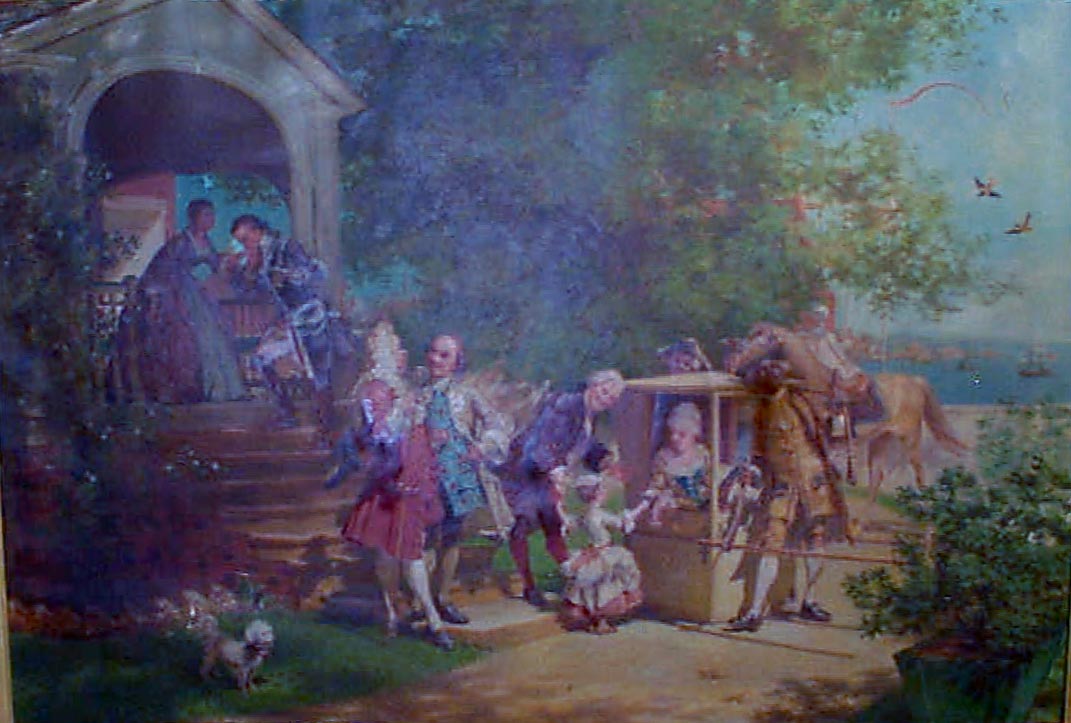
|
Selected objects from the Peabody Collection that have been conserved
demonstrate the success and value of such efforts. For example, in
2000, MdCAP conserved the painting Annapolis in 1750 by Maryland
artist Francis Blackwell Mayer and its frame through a grant from
the Maryland Transportation Authority of the Maryland Department of
Transportation, which was secured by the exhibits committee for the
Miller Senate Building, chaired by Senator Robert R. Neall. |
Annapolis in 1750 before conservation, above,
and
post-conservation, below. |
|
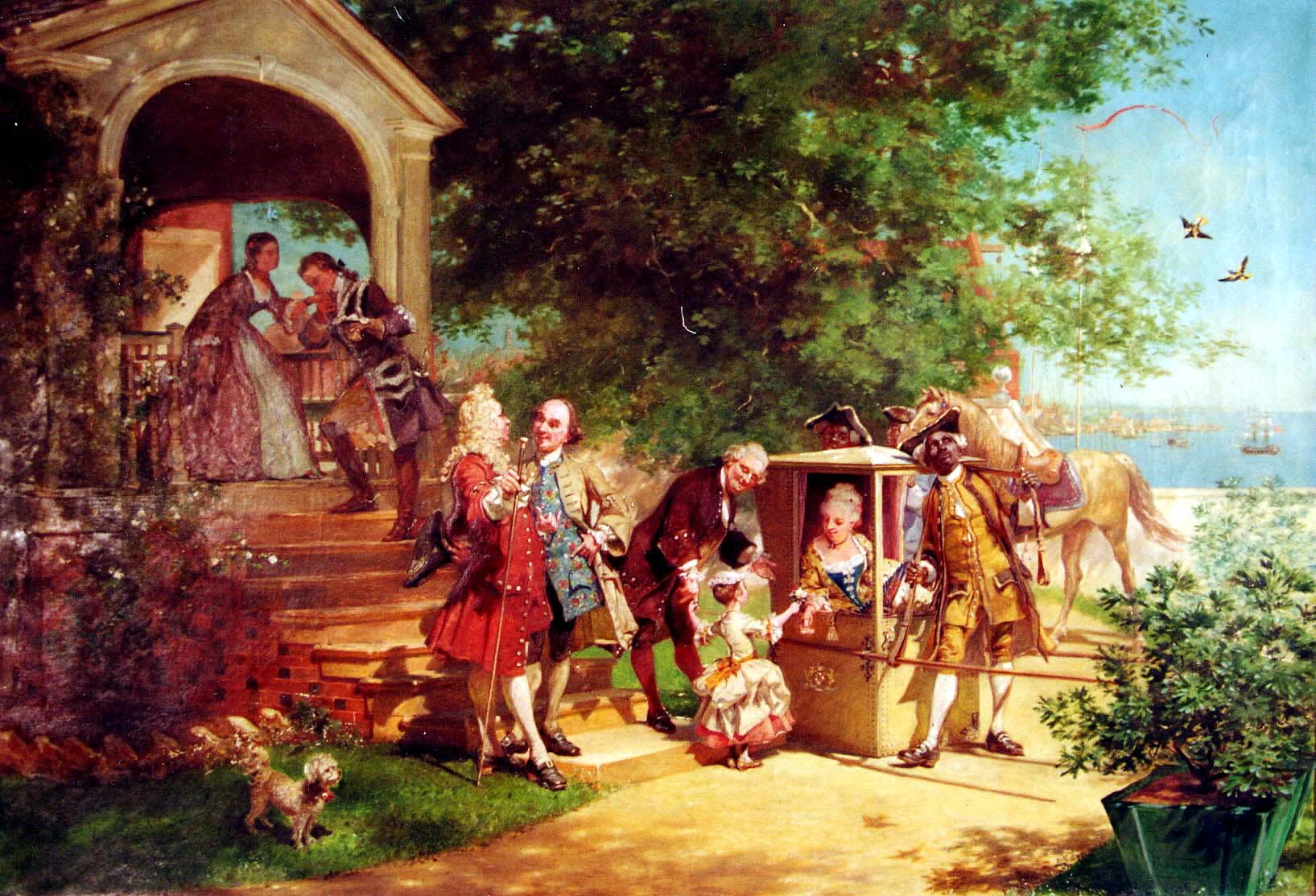
|
Annapolis in 1750 shows the family of Charles Carroll the
Barrister receiving a visit from members of the Calvert family on
the portico of the Barrister's 18th-century Annapolis home. It is
significant not only for its subject but also because, in 1873, it
was the first painting commissioned by the Peabody Institute. After
conservation, Annapolis in 1750 was installed in the Miller
Senate Building, where it still hangs in the first floor exhibition,
From Private Fortunes to Public Gifts: Treasures of the Peabody
Art Collection of the Maryland State Archives. |
In addition to object treatment, project conservators have recommended
that MdCAP work with certain borrowing institutions to ensure the long-term
care and safe display of Peabody Collection objects once they have been
conserved.
| For example, a collection of plaster casts acquired in Europe in
the late nineteenth century for the Peabody Institute currently is
displayed in public areas of a main classroom building at the Maryland
Institute, College of Art. MICA students sketch from these casts on
a frequent basis (see photo at right). However, the casts show evidence
of repeated vandalism and should be displayed in such a way that they
are still accessible to the students, but protected from physical
contact with the public. |
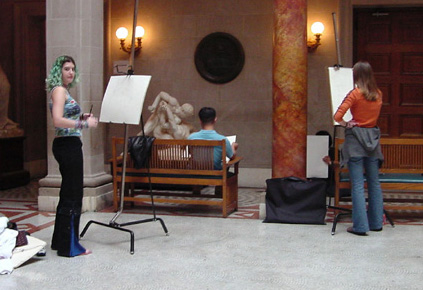
|
Similarly, approximately 30 sculptures and portrait busts are exhibited
in public areas with minimal security at the Peabody Institute. If such
objects are to remain on public view, MdCAP must collaborate with these
institutions to secure funding for improved security and display methods.
Objects that have been categorized as poor or critical (priority 4 or
5) include such historically significant items as:
 Rembrandt Peale's Portrait of George Washington and its frame. The
painting, dating to c. 1800, is marked by deteriorating, discoloring restorations.
More importantly, the frame, which likely is original to the painting, has
major losses in ornamentation and cannot be displayed.
Rembrandt Peale's Portrait of George Washington and its frame. The
painting, dating to c. 1800, is marked by deteriorating, discoloring restorations.
More importantly, the frame, which likely is original to the painting, has
major losses in ornamentation and cannot be displayed.
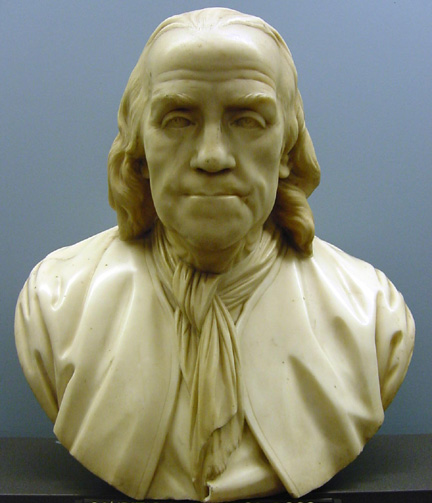
|
 Two portrait busts of Benjamin Franklin: one attributed to Jean-Jacques
Caffieri (illustrated at left) and one to Jean-Antoine Houdon. Currently,
these sculptures are stained and dirty, with chips and cracks in the
material. They would be highly exhibitable if they were cleaned
and repaired.
Two portrait busts of Benjamin Franklin: one attributed to Jean-Jacques
Caffieri (illustrated at left) and one to Jean-Antoine Houdon. Currently,
these sculptures are stained and dirty, with chips and cracks in the
material. They would be highly exhibitable if they were cleaned
and repaired.
 The original frame, designed by notable American architect Stanford
White, to Thomas Wilmer Dewing's early twentieth-century painting,
Lady with a Fan. There are few White frames extant. Unfortunately,
this one cannot be exhibited. Its unique and fragile grille work has
suffered deterioration and losses, requiring immediate consolidation.
Although conservation work will be extensive, it should be a very
high priority.
The original frame, designed by notable American architect Stanford
White, to Thomas Wilmer Dewing's early twentieth-century painting,
Lady with a Fan. There are few White frames extant. Unfortunately,
this one cannot be exhibited. Its unique and fragile grille work has
suffered deterioration and losses, requiring immediate consolidation.
Although conservation work will be extensive, it should be a very
high priority. |
 Three works on paper by nineteenth-century Italian artist Fortunato DiPaoli.
These marvelous gouaches, which date to about 1840, are stained and discolored.
The paper support of one of the drawings is buckling.
Three works on paper by nineteenth-century Italian artist Fortunato DiPaoli.
These marvelous gouaches, which date to about 1840, are stained and discolored.
The paper support of one of the drawings is buckling.
 Charles Willson Peale's Portrait of William Paca (c. 1780,
shown at right). This full-length portrait of Paca, governor of Maryland,
member of the General Assembly, and signer of the Declaration of Independence,
was exhibited in the State House in the late eighteenth century. The
background shows the grounds and summer pavilion of Paca's house and
was instrumental in Historic Annapolis Foundation's reconstruction
of the Paca gardens. The canvas shows evidence of flaking and lost
paint and scratches in its surface. The frame, which is probably original
to the painting, has lost ornament and is visibly damaged around its
perimeter. This painting is a highly significant one in the Peabody
Collection; it is requested frequently for reproduction and is exhibited
at the Maryland Historical Society.
Charles Willson Peale's Portrait of William Paca (c. 1780,
shown at right). This full-length portrait of Paca, governor of Maryland,
member of the General Assembly, and signer of the Declaration of Independence,
was exhibited in the State House in the late eighteenth century. The
background shows the grounds and summer pavilion of Paca's house and
was instrumental in Historic Annapolis Foundation's reconstruction
of the Paca gardens. The canvas shows evidence of flaking and lost
paint and scratches in its surface. The frame, which is probably original
to the painting, has lost ornament and is visibly damaged around its
perimeter. This painting is a highly significant one in the Peabody
Collection; it is requested frequently for reproduction and is exhibited
at the Maryland Historical Society. |
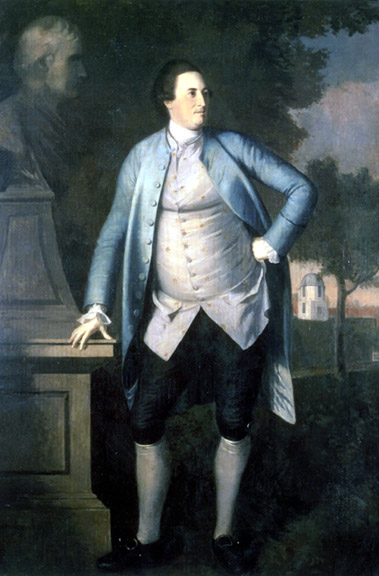
|
 Portrait bust of Baltimore lawyer and Peabody trustee Severn Teackle Wallis
by nineteenth-century Maryland sculptor William Henry Rinehart. The Peabody
Collection is the largest repository of Rinehart sculptures. This marble
bust is very dirty, with staining on the upper layers of the marble. There
are chips and dark spots on the sculpture where soot has filtered into small
irregularities in the marble.
Portrait bust of Baltimore lawyer and Peabody trustee Severn Teackle Wallis
by nineteenth-century Maryland sculptor William Henry Rinehart. The Peabody
Collection is the largest repository of Rinehart sculptures. This marble
bust is very dirty, with staining on the upper layers of the marble. There
are chips and dark spots on the sculpture where soot has filtered into small
irregularities in the marble.
Works on Paper Collection
Aside from providing a measure of the condition of the Peabody Collection
objects, the assessment resulted in an enhanced understanding of the diversity
and dimension of the collection. During the course of the survey, for instance,
the Archives' paper conservator examined 1,100 works on paper, currently
on extended loan to the Baltimore Museum of Art. Previously, these drawings
had been only summarily catalogued.
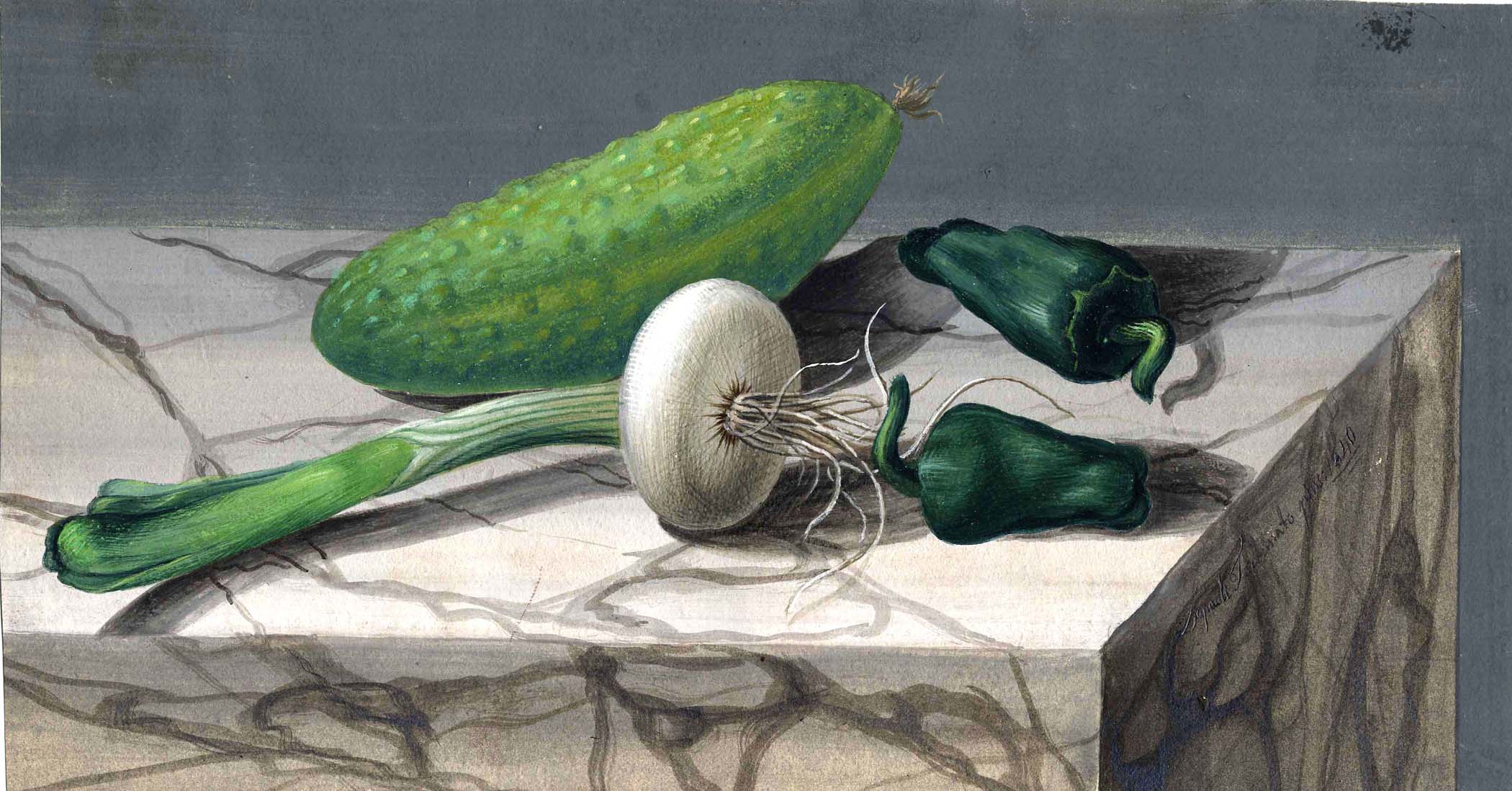
|
The 2001 survey provided the MdCAP curator with a more thorough
understanding of the works, which include 17th-, 18th-, and 19th-century
American and European drawings and watercolors by prominent artists
such as Eugene Delacroix, Jean-Honore Fragonard, and Fortunato DiPaoli
(illustrated at left). |
We are currently preparing a comprehensive website of digital images and
records of these works on paper, so that they may continue to be studied
by staff and the general public. The works bear great potential not only
for future interpretation but also exhibition and/or reproduction. MdCAP
proposes a mechanism by which these drawings and watercolors could be made
available for exhibition or display via facsimile.
Recommended Actions and Timeline for Completion
Based on the volume of conservation work the Peabody Collection requires,
MdCAP recommends a ten-year conservation program. The MdCAP curator proposes
that objects in the poorest condition, classified as priority 5, be treated
during FY2004-2006. Objects classified as priority 4 condition would be
treated beginning in FY2006 through 2008. The remainder of the collection
would be treated in FY2009-2013.
Other measures would allow MdCAP to adequately care for both the Annapolis
and Peabody Collections on a long-term basis. In August 2001, MdCAP submitted
a FY2003 budget request that detailed the outcomes of a condition assessment
of the Annapolis Complex Collection of fine and decorative arts. The narrative
associated with this request may be found as the final section of the current
Peabody Collection report. In this submission, MdCAP requested monies for
personnel and leased space for collection storage. These are measures that
would ensure the long-term care of the Peabody Collection:
Long-term Storage Requirements. MdCAP needs secure,
climate-controlled off-site storage for those art objects not on display.
Due to inadequate facilities at the Hall of Records Building in Annapolis,
MdCAP was forced to move its collection storage into leased space in 2000.
Nearly 15% of the Peabody Collection and 30% of the Annapolis Collection
is in MdCAP storage at the present time. We continue to receive Peabody
Collection objects from borrowing institutions that no longer have storage
space for objects not on display. We have submitted a request for secure,
climate-controlled leased space to the Department of General Services.
Current MdCAP funding does not adequately cover expenses related to this
storage contract. Requested allocations for FY2003-2012: $22,050-$24,310
per year
Additional MdCAP staff. Management of the level of
conservation activity necessitated by the overall condition of the Annapolis
and Peabody Collection objects will require additional MdCAP personnel.
Treating numerous objects from the Peabody Collection each fiscal year
involves scheduling time with various professionals, managing a budget
and related paperwork, packing and transporting objects, and, if objects
are removed from exhibition for conservation treatment, selecting and
preparing alternate objects for display. The conservation of each object
will require approximately 15-20 hours of MdCAP staff time. Management
of the long-term routine maintenance of the collection, which to date
has been implemented on an irregular basis, also will demand about 8-10
days of MdCAP staff time each month. MdCAP recommends hiring a full-time
Collections Manager to coordinate the conservation treatment program and
routine care of all artistic property. Requested allocations for FY2003-2012:
$17,643-$35,983 per year
Projected Costs for Conservation of the Peabody Collection
Total conservation costs, FY2004-20013: $2,975,498
Costs per fiscal year (FY2004-2013):
| DESCRIPTION |
FY2004
|
FY2005
|
FY2006
|
FY2007
|
FY2008
|
FY2009
|
FY2010
|
FY2011
|
FY2012
|
FY2013
|
| Conservation treatment of objects (currently
$80/hour) |
$224,640
|
235,872
|
247,666
|
260,049
|
273,051
|
286,704
|
301,039
|
316,091
|
331,896
|
348,490
|
| Fine Art Packing and Transport Fees |
15,000
|
15,000
|
15,000
|
15,000
|
15,000
|
15,000
|
15,000
|
15,000
|
15,000
|
15,000
|
| Total costs per fiscal year |
239,640
|
250,872
|
262,666
|
275,049
|
288,051
|
301,704
|
316,039
|
331,091
|
346,896
|
363,490
|
For access to conservation reports for individual works
of art or objects in The Peabody Collection, please contact the Curator,
Elaine Rice Bachmann at (410) 260-6445, or by email at elaineb@mdsa.net
Prepared by the Maryland State Archives
msa/stagser/s1259/143/conservation/html/fy04pacrequest.html
 In 1996, the State of Maryland acquired the Peabody Art Collection when
the Board of Public Works and the General Assembly of Maryland, under the
leadership of Senate President Thomas V. Mike Miller and Speaker of the
House of Delegates, Casper R. Taylor, Jr., approved the final payment of
$15 million to the Peabody Institute, one of the state's premier cultural
institutions. The collection is now managed by the Maryland Commission on
Artistic Property (MdCAP) of the Maryland State Archives.
In 1996, the State of Maryland acquired the Peabody Art Collection when
the Board of Public Works and the General Assembly of Maryland, under the
leadership of Senate President Thomas V. Mike Miller and Speaker of the
House of Delegates, Casper R. Taylor, Jr., approved the final payment of
$15 million to the Peabody Institute, one of the state's premier cultural
institutions. The collection is now managed by the Maryland Commission on
Artistic Property (MdCAP) of the Maryland State Archives. 




